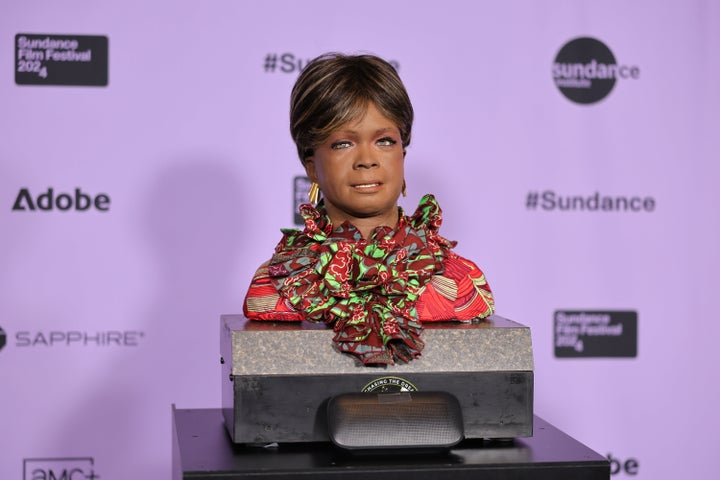
PARK CITY, Utah — Much has been written about how many Hollywood projects make strides in representation but lack the experience or creative input from those represented to pull off culturally convincing art that engages with the realities that plague those communities. The same is true when it comes to artificial intelligence, and the issue is just as pressing.
In an effort to address the lack of more culturally inclusive AI, not enough attention has been paid to what, for example, it means to have a Black female image as its face. Is it just about marking off an empty effort toward diversity? Is it another example of cashing in on the trend of Black images? Or is it to actually reflect and connect with Black girls and women?
A lot of those answers point to a problem with the people behind these products, mostly white men, who too often don’t recognize risks like perpetuating or glossing over stereotypes or cultural exploitation that could impact the already vulnerable human inspirations.
Or, on the flip side of that, what success among Black female consumers could mean if the AI wasn’t created with them in mind, despite their likeness being a selling point? Two documentaries that premiered at this year’s Sundance Film Festival raise these issues and more, with varying results.
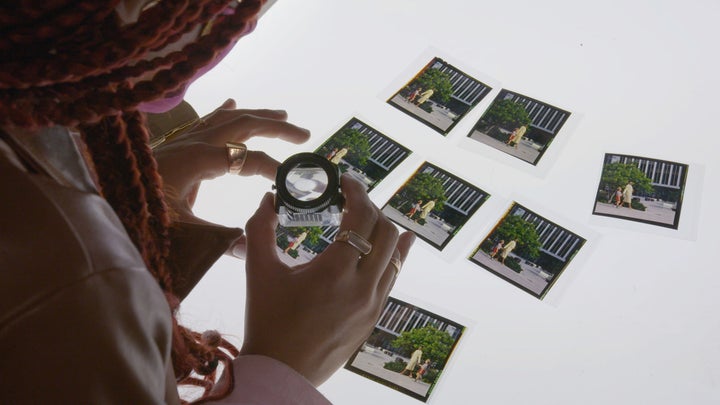
“Seeking Mavis Beacon,” directed by Jazmin Jones, examines the impact of “Mavis Beacon Teaches Typing,” a product launched in 1987 that used the face of Haitian American model Renee L’Esperance to sell products that taught people how to type and use the computer. None of the audio, the brand’s name, the instruction or anything beyond her image was actually hers.
It went on to earn hundreds of millions of dollars for its makers (Joe Abrams, Les Crane and Walt Bilofsky), owing much of that to Black girls and women. The film alleges that the actual L’Esperance, who’s long since disappeared from the public eye, was paid only $400.
Part of the product’s boom was due to the belief held by many consumers that Mavis Beacon was a real-life gorgeous, brilliant, dark-skinned Black woman whose likeness and presumed life experiences appealed to an underserved audience in digital media at the time and still today.
With no relation to the then-obscured identity of L’Esperance, a cosmetics counter model in the ’80s who, as Crane describes her in the film, donned three-inch nails (or five-inch, depending on who’s telling the story) and “looked like she had never touched a keyboard in her life.” But she apparently served Crane’s and his partners’ purpose — being a Black woman.
While L’Esperance’s employers had a frivolous regard for her potential and what she’d represent, Black female users developed a trust in the AI and, by very distant extension, the model as well. That maintains today as fans in “Seeking Mavis Beacon,” such as Jones and associate producer Olivia McKayla Ross, reckon with what her image has meant to them.
“If I could address Renee L’Esperance,” a Black female user reflects in the film, “my first thought is — you did it. You inspired a young Black kid to type and feel embodied with whatever aspiration I had. It was nice to see a familiar face, and that’s priceless.”
It’s hard not to hear how the product has impacted her all these years and not think about the makers’ disregard and lack of cultural foresight for a Black female image that turned them into millionaires.
“With her being Black, I feel like I’m at least being engaged in conversation and there’s space for me to think about what’s happening here,” the fan continued. “If she was white, then I wouldn’t think about it, unfortunately. It would be like ‘White Noise Teaches Typing.’”
Much of “Seeking Mavis Beacon” is peppered with these personal tributes to the elusive L’Esperance and her AI, including from Jones and Ross, self-proclaimed “e-girl detectives” (a moniker that should give you a sense of the shifting tones throughout the doc). The pair become the film’s default stars as they investigate and contemplate difficult truths.
But the questions they begin to ask themselves and their audience about Black women’s relationship with their images in AI is what most resonates in the film. How does an appreciation for this kind of product evolve upon learning that they weren’t considered in the making of it?
“I would like to claim that back in 1987, we were totally woke and we planned for Mavis to be an icon,” Bilofsky admits in the documentary. “We were in the right place at the right time. Les had the genius idea to put a Black person on the title and on the cover as a marketing thing.”
It’s the creator’s last sentence there that sits most uncomfortably. To be fair, Bilofsky’s shortsightedness was pretty typical for white tech guys in the ’80s. But decades later, his comments throughout Jones’ interview with him don’t invoke confidence that he’s any more prepared to engage in conversation beyond the Black female image being just good business.
A lingering detail, uncovered in “Seeking Mavis Beacon,” that L’Esperance sued the Mavis Beacon makers in 1999 for misusing her image — including creating animated versions — without her consent or compensation only adds insult to injury.
How much of the model’s Blackness was marketing strategy and how much was it about manipulating it to bolster deep-seated images of Black women as, Ross ponders in the film, “servile fembots” like Mammy from “Gone with the Wind” and others throughout cinema history? “Seeking Mavis Beacon” offers no answers to that.
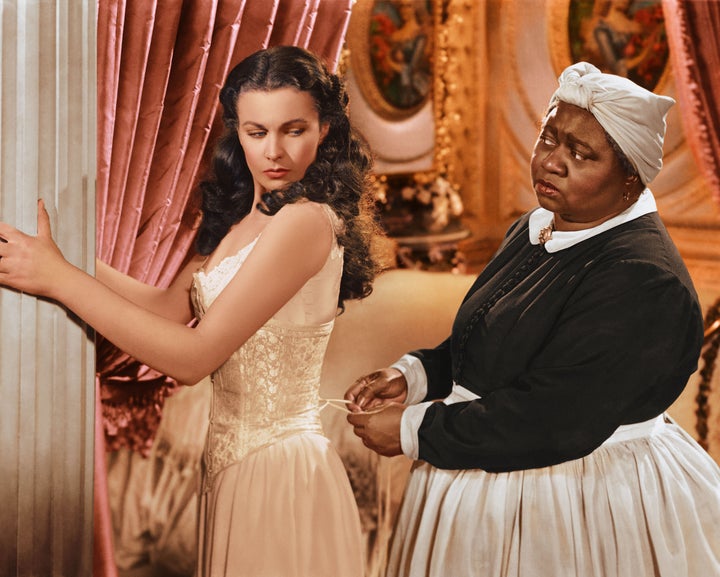
Instead, the filmmakers lead their audience to another question: Should any of this matter when the AI figure had so much of a positive impact on them and many other Black girls and women? Does this conversation serve to only “problematize” an important tech contribution?
Well, the problems acknowledged throughout “Seeking Mavis Beacon” would still exist without the documentary or any of us discussing it. It’s crucial to dig into them and the multiple truths surrounding them, such as allowing people space to hold something that is both significant and problematic at the same time.
“Love Machina,” Sundance’s other AI documentary featuring the digital face of a Black woman, flattens that dialogue almost completely. While it isn’t set around issues of race in advanced technology, like “Seeking Mavis Beacon” is, it still leaves the audience with the same questions. The trouble is, it doesn’t acknowledge them as actual problems.
Part of that stems from the basis of “Love Machina.” It tells the story of tech innovators and married couple Bina and Martine Rothblatt, who want their four-decade romance to continue long after they die in the form of their AI versions.
Both Martine and Bina, who is Black, are interviewed, along with their children, by a bevy of scientists, futurists and other experts on the journey and phenomenon of BINA48, an AI launched in 2010 that preserves the real-life Bina’s consciousness in the form of a bust with her likeness.
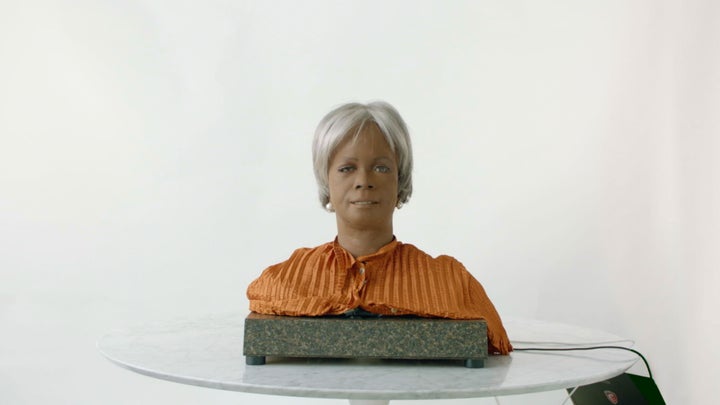
BINA48 has since gained worldwide acclaim and sparked a lot of attention around the possibilities of science and technology. For the Rothblatts in particular, though, BINA48 is also a way to promote their belief in a benevolent future without the hate and prejudice that are prominent in the human world.
On one hand, “Love Machina” is a beautiful romance for the ages, propelled by what has become the very real possibility of everlasting love. On the other? BINA48 still has to coexist and contend with the preeminent reality of bias, racism and sexism throughout the rest of humanity.
But it doesn’t. In fact, it’s not even programmed to do so. Much like how the real-life Bina portrays herself in “Love Machina,” the AI responds to the world through an idealized lens where humans are attuned to each other’s needs and are one with nature.
It’s hard to tell from the movie whether human Bina actually believes that this idyllic reality can actually supersede our actual reality or if she was simply never asked more direct questions from filmmaker Peter Sillen, a white man, about how she and her AI respond to race. If the latter, you have to ask: Why?
And what questions, in the transference of Bina’s consciousness to the AI, was she asked to flesh out BINA48 — and by whom? “Love Machina” doesn’t seem to be curious about any of this.
Aside from her daughter, Jenesis, Bina is among the rare Black women who appear in the documentary. The creators behind BINA48 at Hanson Robotics are also mostly male and white, further marginalizing the experiences and voices of Black women despite this groundbreaking achievement on which “Love Machina” is fixated.
It becomes a white success story anchored by the supposedly pliant image of a Black woman. That never feels right.
Even when the subject of BINA48’s race as it impacts her functionality comes up in “Love Machina,” its makers only acknowledge their limited expertise and how hard they worked to find the right skin color for the AI. They do, however, recognize how significant it is that a tech like BINA48 has the face of a Black woman.
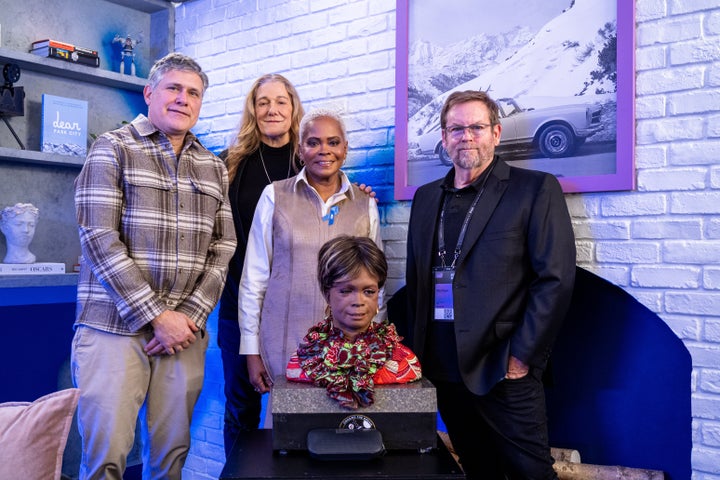
But what difference does any of that make when they don’t engage with what Black womanhood even means? It becomes a Black female image through a white male point of view. While it seems to come with the real-life Bina’s full consent, the implications of BINA48 aren’t much different from Mavis Beacon’s.
In fact, “Seeking Mavis Beacon” does a much better job of grappling with the racial complexities of BINA48 within a few short minutes than “Love Machina” ever attempts to do throughout its entire runtime.
Amid its contemplation of race in AI, “Seeking Mavis Beacon” includes an interview with Stephanie Dinkins, a Black female transmedia artist who has had her own frustrations with trying to connect with the so-called human-inspired BINA48, describing it as “a cagey character.”
“When you start to ask a robot about love,” Dinkins explains in the doc, “when you start to ask a robot about race, the answers felt really flat to me, very politically correct. And that just scared the crap out of me.”
A contribution like BINA48, or even Mavis Beacon for that matter, can never be fully equipped for the real world if there’s a total disregard or lack of understanding of what that means for the Black female image they’re supposed to represent at the onset of their creation. It’s an awkward reflection to witness, even watching it on film.
“If that is the way Black people are being depicted in technologies, especially in technologies made by people who have really good aims in the long run, that means we’ve got problems,” Dinkins continued. “In the future, we will be this flat thing.”
A flat thing that will only serve to benefit the notion of a future that clunkily erases any trace of historical context without reckoning with those histories themselves. That’s not different from what is referred to today as a “post-racial world.” It’s an attempt to solve systemic problems we’ve never adequately addressed. That’s not better, and it’s definitely not ideal.
While wavering in focus at times, “Seeking Mavis Beacon” at least copes with all these things at once, notably from the minds and curiosity of Black women interested in conversations around Black female images in AI. “Love Machina,” however, only manages to perpetuate long-standing issues.
